Göbekli Tepe, ‘Stone Age Zoo,’ in the Book of Genesis
Sumer is often noted as man’s “first civilization,” situated on the Mesopotamian plains at the edge of the Persian Gulf. This location, and the cities that emerged from it, are a perfect match for the biblical Shinar (a parallel name), described in the biblical account as the first civilization to emerge following the Flood. Genesis 11:1-2 state:
And the whole earth was of one language and of one speech. And it came to pass, as they journeyed east, that they found a plain in the land of Shinar; and they dwelt there.
From there, the first cities were constructed—cities such as Babel, Erech, Accad, Nineveh and Calah. These have been discovered by archaeologists (Babylon, Uruk, Akkad, Nineveh and Kahlu, respectively), fitting with the parallel early setting.
But what about before the “earliest” civilization at Sumer? What, if anything, was mankind collectively doing? Over the past 25 years, archaeologists have been uncovering what they identify as an even earlier “hub” of humanity—not a civilization, but impressive evidence of a communal effort: the “oldest temple yet discovered anywhere.” And remarkably, this site fits with a peculiar “pre-Shinar” period described in the biblical account.
Göbekli Tepe
In the early 1960s, peculiar stone circles were noted in an archaeological survey in the southeastern Anatolia region of Turkey. They were initially dismissed as unimportant, until German archaeologist Klaus Schmidt began excavating the site, known as Göbekli Tepe (“Potbelly Hill”) in 1995. What he uncovered was utterly unexpected.
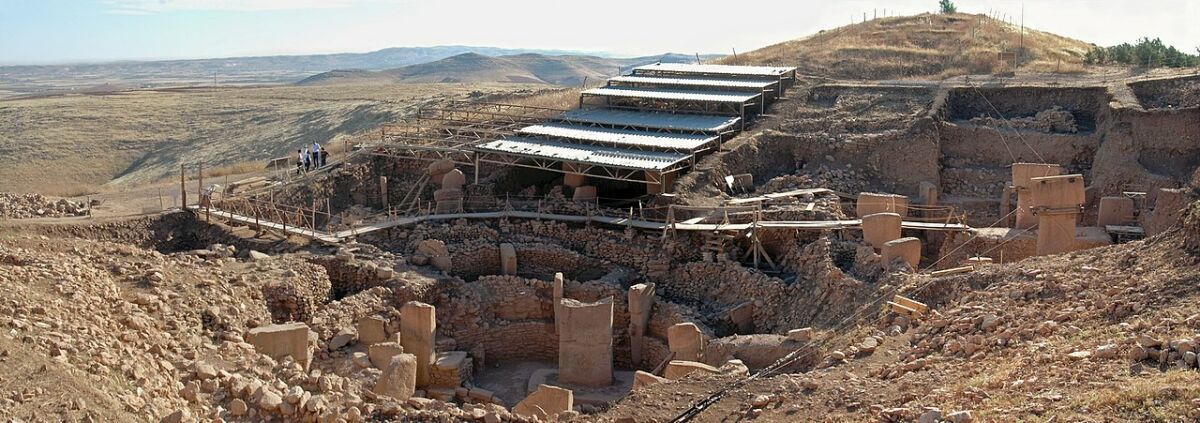
The circular, 20-acre site was evidently of a religious nature. It was made up of several layers, the earliest of which were carbon-dated as far back as circa 10,000 b.c.e. (more on this dating further down). This shocking date put the creation of the site during the so-called Paleolithic, hunter-gatherer era—long before mankind was supposed to have settled into established, pastoral communities. Mankind wasn’t supposed to have been united and able to construct such monuments for thousands of years.
Indeed, no evidence was discovered of a settled community. Yet this giant cultic area, sporting the world’s oldest-known megaliths (up to 60 tons in weight), had been built by the region’s inhabitants.

What’s more, the builders of Göbekli Tepe exhibited an understanding of geometry—three of the main stone circles at the site were arranged in a precise equilateral triangle (a stunning discovery to scientists—a “grand geometric plan” that was only realized earlier this year).
One of the standout things about Göbekli Tepe has to be the animals. It boasts numerous carvings of different animals. It also has the remains of multiple dozens of different species.
Animals depicted on the stone pillars include snakes, foxes, boars, cranes, aurochs, sheep, donkeys, gazelles, leopards, lions, bears, spiders, scorpions, various insects, vultures and numerous other bird species—to name a few. Nearly 100 animals are depicted on the largest of the monoliths alone. And among the identifiable animals, there were numerous other unidentifiable creatures.
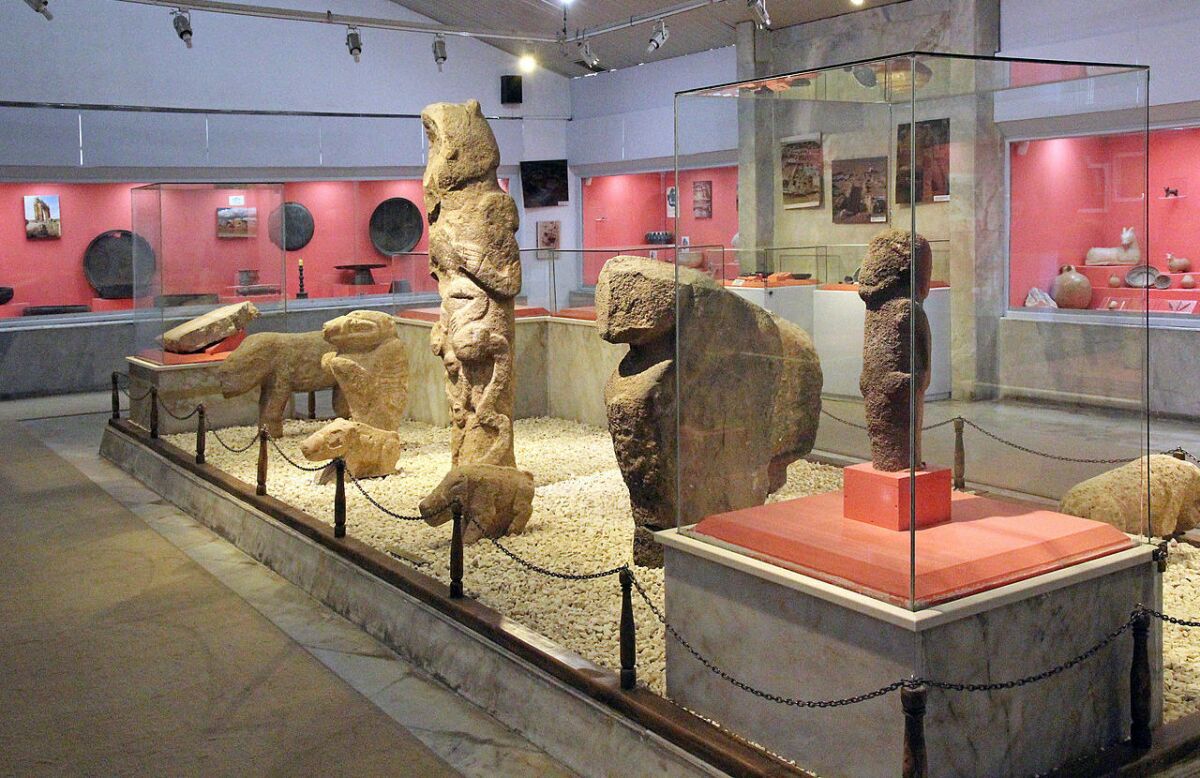
The animal remains include the bones of various deer species, sheep, cattle, goats, donkeys, boars, wolves, foxes, leopards and various other wildcats, weasels, badgers, hamsters, hedgehogs, numerous gerbils and various other rodents, and dozens of bird species including geese, owls, magpies, eagles, quails, ducks and thrushes. One study examined some 40,000 animal remains. As Schmidt described it, this truly was a “Stone Age zoo.”
Conversely, among the thousands of animal remains and depictions, only two fish were discovered. Not two sets of species—just two fish (a catfish and an unidentifiable cyprinid).
And bizarrely, adorning some of the megaliths were a number of peculiar designs closely matching those found among the Aboriginal Australian community, as well as parallel objects at the site and depictions of Australian animals—leading to a flurry of articles speculating on some kind of Aboriginal connection to this location.

Finally (as if the site couldn’t be any more odd), certain carvings at Göbekli Tepe apparently depict “massive global climate shifts,” according to a paper by University of Edinburgh researchers. They described a “cataclysmic event” related to the end of the Ice Age period. Among some of the carvings appeared to be observations of comets.
What on Earth was this site? What were humans doing here?
‘They Journeyed East’
Archaeologists are stumped by the site. Guesses have been made as to the meaning behind the symbols and layout, but many scientists say we simply cannot know—the site is just too early, too disconnected from anything else.
Yet it turns out that Göbekli Tepe matches closely a picture painted by the Bible generations before mankind gathered in Shinar to begin the world’s “first civilization.”
Given the accuracy of biblical information describing Sumer/Shinar and the surrounding cities—thousands of years before they were discovered and corroborated—it would be foolish not to at least consider the biblical account of man’s whereabouts prior.
Genesis 11:2 reveals that mankind gathered in Shinar after they “journeyed east” (Jewish Publication Society; the King James translation, “from the east,” is inaccurate). This means that they gathered there from scattered locations to the west. But the Bible is even more precise in pinpointing the location: It reveals that mankind migrated from Turkey.
Of course, the account of man’s settlement in Shinar follows the well-known story of Noah’s Flood. According to the biblical account, the ark landed “upon the mountains of Ararat”—somewhere in mountainous eastern Turkey (the exact place is still debated)—and from this location, Noah and his family descended from the ark—along with “every beast, every creeping thing, and every fowl, whatsoever moveth upon the earth” (Genesis 8:19).
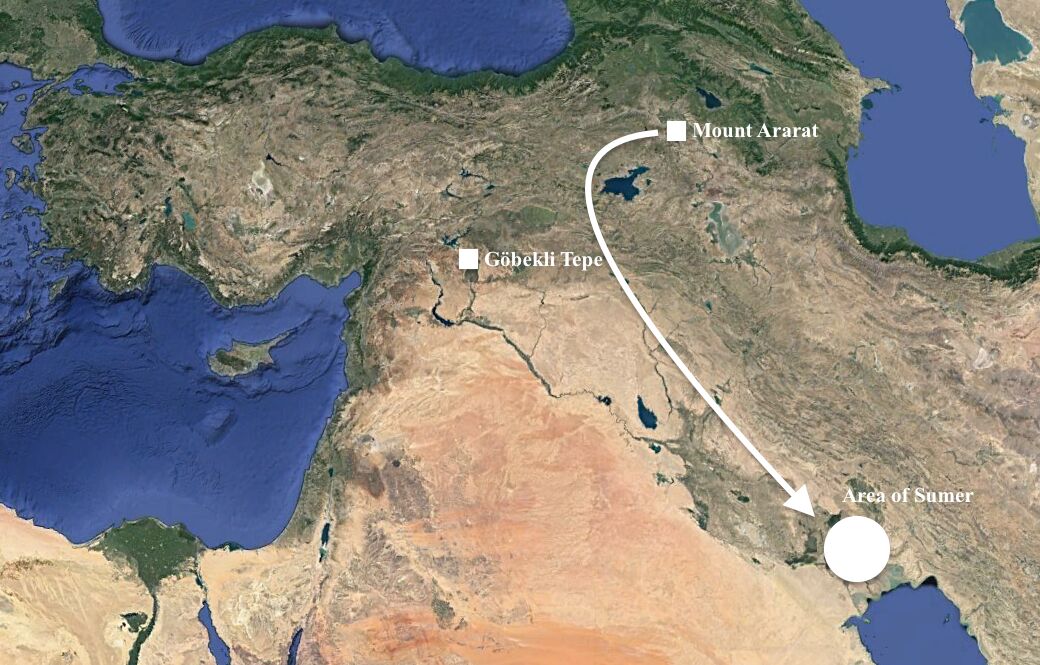
Is it just coincidence that prior to the “first civilization” in Sumer, there is now evidence of humanity’s “hub” specifically in southeastern Turkey? And not only that—a preponderance of all kinds of animal species? “Every beast … whatsoever moveth upon the earth”—all but the one family omitted in the biblical account—the sea creatures? (Below, one of the Göbekli Tepe monoliths—Pillar 56—displays all manner of animals filing along together in a large group—resemblant of the biblical account of the animals entering and exiting Noah’s ark.)
https://twitter.com/xufospace/status/862626726110781441
And numerous other pre-Sumerian, pre-civilization “collectivist” sites have been discovered across southeastern Turkey, such as nearby Çayönü, Çatalhöyük and Nevalı Çori (which also has similar animal depictions). Many more ritual sites have been discovered, but not yet excavated.

The Bible describes Noah, after leaving the ark, building “an altar” and sacrificing “of every clean beast, and of every clean fowl” on the altar. Göbekli Tepe stands testament to a form of ritual worship in relation to a multitude of animals.
“First came the temple, then the city,” quipped Schmidt. Such is the account presented by archaeology—and such is the account presented in the Bible.
Arrata: Migration of a Goddess
Of course, it does not take long for mankind to deify even the most inane objects. Such is likely the case with the animals at Göbekli Tepe. But we can also get a sense for the migration of ancient man from the “migration” of their gods. And the revered goddess of Sumer, Inanna (later Ishtar/Astarte), is described in Sumerian literature as originally occupying a mysterious land called Aratta.
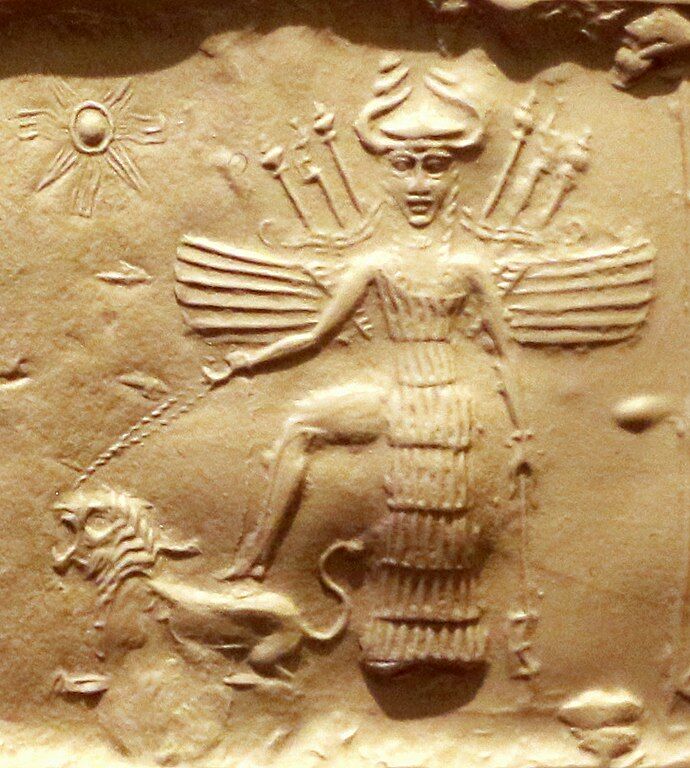
Scholars still debate the location of Aratta. Evidently it existed—correspondence between Sumer and this location has been discovered. But where was this ancient land from which the goddess “migrated” to Sumer?
Sumerian inscriptions describe this place as “the inaccessible mountain range, Aratta.” They describe it as a wealthy place, a home of much gold and precious materials—yet in a remote, difficult-to-reach mountainous area.
This would fit well with Turkey. It goes without saying that the name Aratta is a close match to the biblical Ararat. Of course, the mountains are a match. And Turkey is renowned historically for its gold and other riches. (You may have heard of the legend of King Midas and his gold. He was a king in ancient Turkey.)
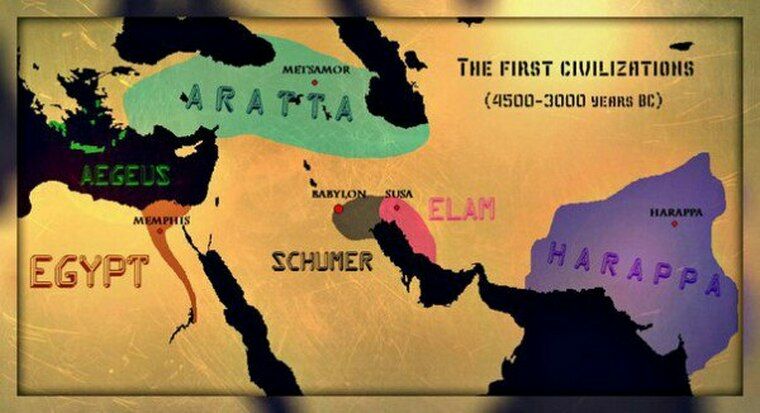
Of Predators and Men
As for the specific cultic function of Göbekli Tepe, scientists are left to speculate. A high proportion of the animals carved into the megalithic stones are predatory—as such, it has been wondered if these were some kind of religious talisman-gargoyle equivalent to ward off predators.

Here again is a match for the pre-Shinar account. Nimrod is the infamous early leader and tyrant of the Bible, who brought together the early post-Flood civilization in Shinar. “He was a mighty hunter before [in place of] the Lord” (Genesis 10:9). Extra-biblical traditions assert that before gathering together in Shinar, mankind had been scattered and vulnerable among the wild animals—at the mercy of vicious predators. Among them, Nimrod became a “savior”—a “mighty hunter” who defended the population and rose up as a “mighty one in the earth” (verse 8), eventually gathering mankind together as one civilization in the plains of Shinar.
This assessment, then, of an early mankind especially plagued by wild animals (a prevalence of different creatures that had survived aboard the ark) would fit the picture of Göbekli Tepe—a religious effort by the earliest, scattered communal generations to ward off wild animals.
Another Parallel
Another parallel between ancient Göbekli Tepe and the post-Flood-yet-pre-Shinar biblical account is that the earliest traces of an alcoholic beverage have been discovered at the site. Researchers in 2012 discovered what appeared to be chemical traces of beer being produced in limestone basins—demonstrating just how far back our thirst for grog goes.
The same is also described in the Bible: The earliest account of alcohol is found in Genesis 9, which describes wine-making and overindulgence, and an ensuing incident related to drunkenness.
The earliest mention of beer in the Bible is many years later in the book of Numbers, around 1400 b.c.e. On the other hand, the earliest traces of wine-making have been discovered in China and around the wider Anatolia region, dated 7000–5000 b.c.e. Type of alcohol notwithstanding, the parallel early settings of its production (with all the “feasting” and “drinking,” as the Cambridge researchers wrote of Göbekli Tepe) is notable.
A Long Walkabout
According to the biblical account, all man descended from Noah, his sons and their three wives. Over the course of several generations, mankind descended from the Anatolian mountains before gathering in large part under one banner and establishing themselves in “a plain in the land of Shinar.” From there, they endeavored to build the tower of Babel before the languages were “confounded” and mankind was “scattered … abroad from thence upon the face of all the earth” (Genesis 11:8). This is the great separation of all mankind.
Considering this, there is hardly a place more distant than Australia, on the opposite side of the globe. This is where our “Aboriginal” element comes in.
One of the most well-known Aboriginal Australian traditions is the “walkabout”—a rite-of-passage for young males, who wander alone into the wilderness for up to six months. The practice also illustrates the nomadic, “wandering” lifestyle of the Aborigines.
It’s an apt description, if we are to believe the biblical account, for the people who must have undergone the furthest post-Flood migration—the Aborigines.
Of course, here again, the Flood story and separation of mankind is relegated to myth by scholars. Aboriginal Australians are generalized by scientists as a culture simply “frozen in time” for the past 50,000 years.
But this is where Göbekli Tepe again comes in. Several odd symbols and objects have been uncovered at the site—symbols and objects that match those of the Aboriginal Australians nearly perfectly.
Some few examples: Of the monoliths at the site, several are designed to resemble human form. The chest of one such “human” monolith carries an engraving that closely matches an Aboriginal chest marking (see below). Another “human” monolith holds what appears to be a boomerang—the famous Aboriginal weapon of choice.
https://twitter.com/Sword_Goddess/status/1277964500818251780
Decorated throw-stones have been discovered at the site, matching decorated cultic Aboriginal “Churinga” stones. And one such Aboriginal stone (depicted below) matches the markings on the body of another monolith.
Another, sexually explicit, image depicts a woman in exactly the same contorted form as has been discovered in Aboriginal Australia—part of a depiction known Down Under as the “Rainbow Serpent.” And the serpent itself bears a peculiar stylistic connection to one depicted at Göbekli Tepe.
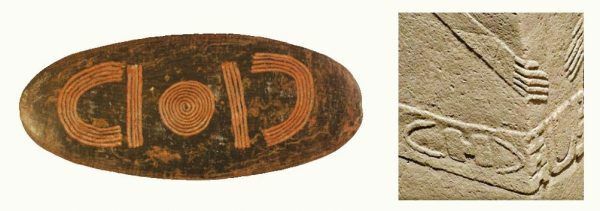
The list goes on—hence the slew of articles postulating some kind of Aboriginal connection to the site (read more here). Add to that some peculiar-looking Australian animal-like carvings, such as the emu.
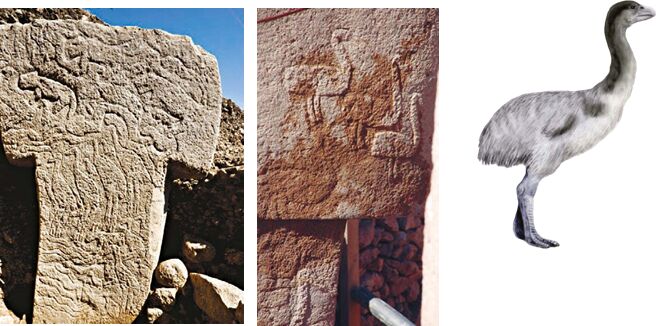
What is the explanation? Any connection is viewed as impossible: The Aborigines are supposed to have been isolated tens of thousands of kilometers away at the time Göbekli Tepe was built. Thus, any similarities have been dismissed as simply “exceptional concidences” or “misrepresentations.”
The reader can decide. An Aboriginal connection certainly cannot fit with conventional science. But it does fit remarkably well with the biblical account of man’s collective post-Flood origins in Turkey and eventual dispersion, with different groups separating and taking different customs and symbols with them.
And maybe that’s why so many completely separated cultures around the world carry their own traditions of a Great Flood and a tower of Babel-style event.
A Watery Apocalypse
The big problem, however, is the dating. Biblical chronology places Noah’s Flood in the late third millennium b.c.e. This is the historical window that the Sumerian Empire is on the scene, but according to traditional dating, Sumer’s occupation began some 2,000 years earlier, around 5000 b.c.e.

Still, ancient parallel accounts of a Flood story (such as the Epic of Gilgamesh) were so widespread in Sumer and surrounding empires that scientists are compelled to present some kind of an explanation. One theory is that the Persian Gulf was much shallower and gradually flooded, causing a population to migrate along the rising shoreline until they settled on the northern edge of the gulf in what became the territory of Sumer.
But that answer seems a bit of a cop-out, especially considering that worldwide, indigenous traditions of a great flood event are so widespread that they could almost be called a “cultural universal.” The Bible itself—alongside the various ancient traditions—states that the Flood “prevailed exceedingly upon the earth; and all the high mountains that were under the whole heaven were covered” (Genesis 7:19).
Putting aside the (controversial) dating, and looking at the bigger picture: Secular science has long realized a period of cataclysm, widespread near-extinction of animals and mankind, and continent-transforming flooding during human history that resulted in the separation of America and Russia, and the separation of England from mainland Europe and Scandinavia.
It’s called the Quaternary Extinction Event. You might think of it more simply as the “Ice Age,” a period whose end is dated roughly to 10,000 b.c.e.—just before “establishments” such as Göbekli Tepe began popping up in Turkey.

Scientists still debate what caused the mass extinction event—but the answer has been linked to glacial activity, increasing temperatures, a corresponding rise in sea levels, floods.
Something caused the disappearance of the classically “Ice Age” animals—woolly mammoths, glyptodonts, giant sloths, etc—as well as the wholesale extinction of all different of human “families” (i.e. Denisovans and Neanderthals—who match rather closely a “breed” of people described in Genesis 6:4)—save for the Homo sapiens. (Contrary to popularized belief, all are, in fact, the same “species”—genetic research has shown that there is about as much difference between a Neanderthals and “modern” humans as there is between Chinese and Germans.)
Just last year, geneticists discovered that nearly all animals (including humans) descend from single pairs of ancestors that lived roughly around 100,000 years ago—apparently the result of some kind of “catastrophic event after the last ice age” (as reported here). (Daily Mail reported: “‘This conclusion is very surprising,’ [David] Thaler admitted, ‘and I fought against it as hard as I could.’”) Other genetic research has restricted that bottleneck to a much tighter time frame.
All just “exceptional coincidences”?
Actually, the wider picture of Earth’s history and prehistory closely parallels the biblical timeline (see a synthesis, below). As for the dating—anything prior to 2000 b.c.e. is a nightmare (read our article here for more information). Suffice it to say, according to the biblical account, world conditions before Noah’s Flood were such to support nearly millennia-long human lives (as well as “Ice Age” animals growing to far more immense sizes than their modern-day counterparts—compare Ice Age wombats with their modern counterparts). It would stand to reason that such conditions would in turn artificially elongate the prehistoric dates—right back to the general time frame of 200,000 years for “modern man.”

Yet after the biblical Flood, the lifespans of mankind did not immediately diminish to modern lengths. It took several generations for this to take place (the oldest person born after the Flood lived 464 years—Genesis 11:17). It was not until the time of the patriarchs, around 2,000 b.c.e., that lifespans began to normalize. And it is right at this time that secular dating aligns with biblical chronology and events.
A 10,000 b.c.e. dating for the end of the Ice Age, then, and the subsequent emergence of communal human effort in southeastern Turkey before descending down into the plains of Sumer only makes sense when paired up with the biblical account.
The discoveries at Göbekli Tepe—early, pre-Sumerian collaborative construction efforts west of the eventual plains-civilization; vast numbers of diverse animals and remains; peculiar indigenous symbols and ritual objects; the earliest evidence of alcohol production; possible depictions of a climactic destruction event—these have been a real surprise to scientists. But all things considered, perhaps they should not have been.